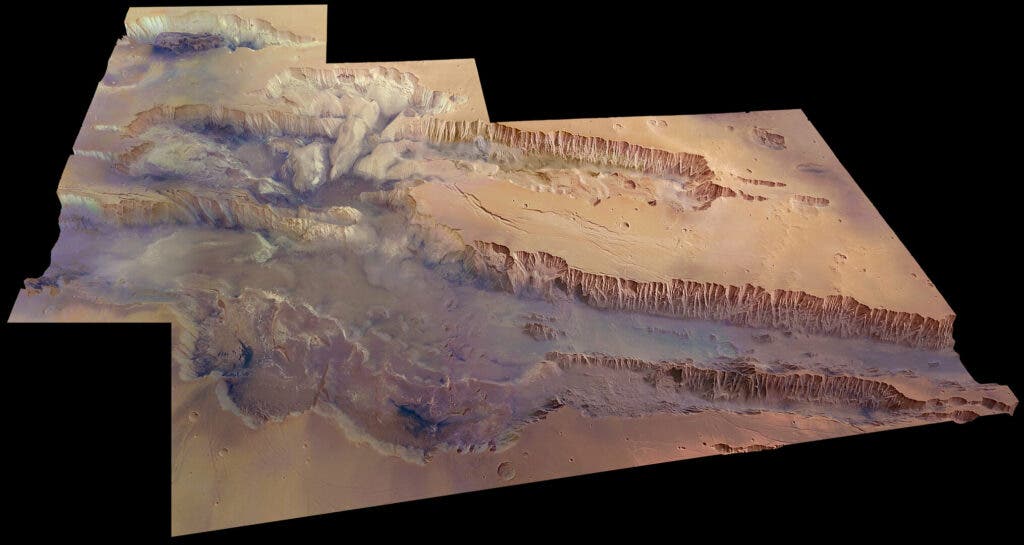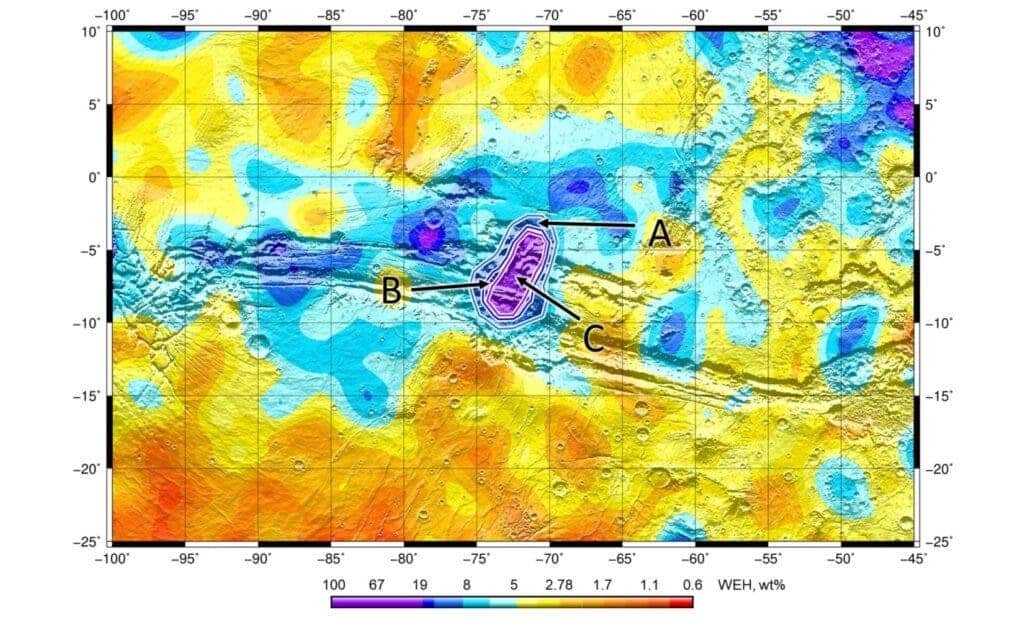
The Red Planet has its own version of the Grand Canyon, only at a much grander scale. The largest canyon system on Mars, known as Valles Marineris, is at least ten times longer, five times deeper, and 20 times wider than the Grand Canyon in Arizona. Although it is now drier and more barren than any desert on Earth, Valles Marineris’s subsurface may be unusually rich in water, and it’s found not all that deep either, making it highly accessible for potential Martian astronauts.
According to geologists and geophysicists who analyzed data gathered by the Trace Gas Orbiter between May 2018 and February 2021, the subsurface material under an area about the size of the Netherlands could be made up of as much as 40% water. The data was recorded by the Mars orbiting spacecraft’s FREND instrument, or Fine Resolution Epithermal Neutron Detector, which is able to map hydrogen emissions in the topmost layer of Martian soil (about one meter, or 3.28 feet).
The instrument actually detects neutrons emitted when galactic cosmic rays strike the Martian soil. These neutrons represent a marker of hydrogen and, by extension, water. Drier soils emit more neutrons than wetter ones, for instance. This observation technique allowed the researchers to map water content under Valles Marineris with unprecedentedly high resolution while revealing water features that couldn’t be spotted before.
Writing in the journal Icarus, the researchers affiliated with the European Space Agency (ESA) reported that as much as 40% of the near-surface material in this region, which measures around 41,000 km2, appears to be water. More than likely the water exists in the form of ice. Some of the water may also be attached to minerals within the soil.
“With TGO we can look down to one meter below this dusty layer and see what’s really going on below Mars’ surface – and, crucially, locate water-rich ‘oases’ that couldn’t be detected with previous instruments,” says Igor Mitrofanov of the Space Research Institute of the Russian Academy of Sciences in Moscow and lead author of the new study.
Billions of years ago, Mars used to be a water world with large oceans and fast-flowing rivers dotting its landscape. Most of that water has dried up and escaped into space after the planet lost its magnetic field, thinning its atmosphere to a volume less than 1% of Earth’s.

But not all of this water has been lost. Large swaths of water ice have been identified in the planet’s polar regions. Still, while finding water on Mars is, by now, not any news in itself, the wet cache found under Valles Marineris is remarkable due to its geography. The huge canyon system is found just south of the Martian equator, where temperatures aren’t as cold as at the poles to support water ice on the surface. However, the temperatures are mild enough to sustain a potential Martian colony. Indeed, the region around Valles Marineris has been previously identified as a potential landing spot for a manned mission.
According to researchers, the water beneath Valles Marineris can be compared to Earth’s permafrost regions, where water ice can be found under dry soil. More research, however, is required in order to establish the special mix of conditions that have accommodated water in the region despite the high temperatures near the equator.
“This finding is an amazing first step, but we need more observations to know for sure what form of water we’re dealing with,” said study coauthor Håkan Svedhem, a former project scientist for the orbiter, in a statement.”The finding demonstrates the unrivaled abilities of TGO’s instruments in enabling us to ‘see’ below Mars’ surface — and reveals a large, not-too-deep, easily exploitable reservoir of water in this region of Mars.”


